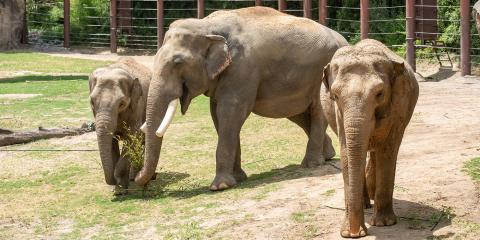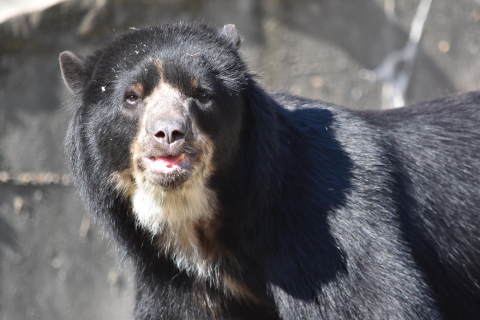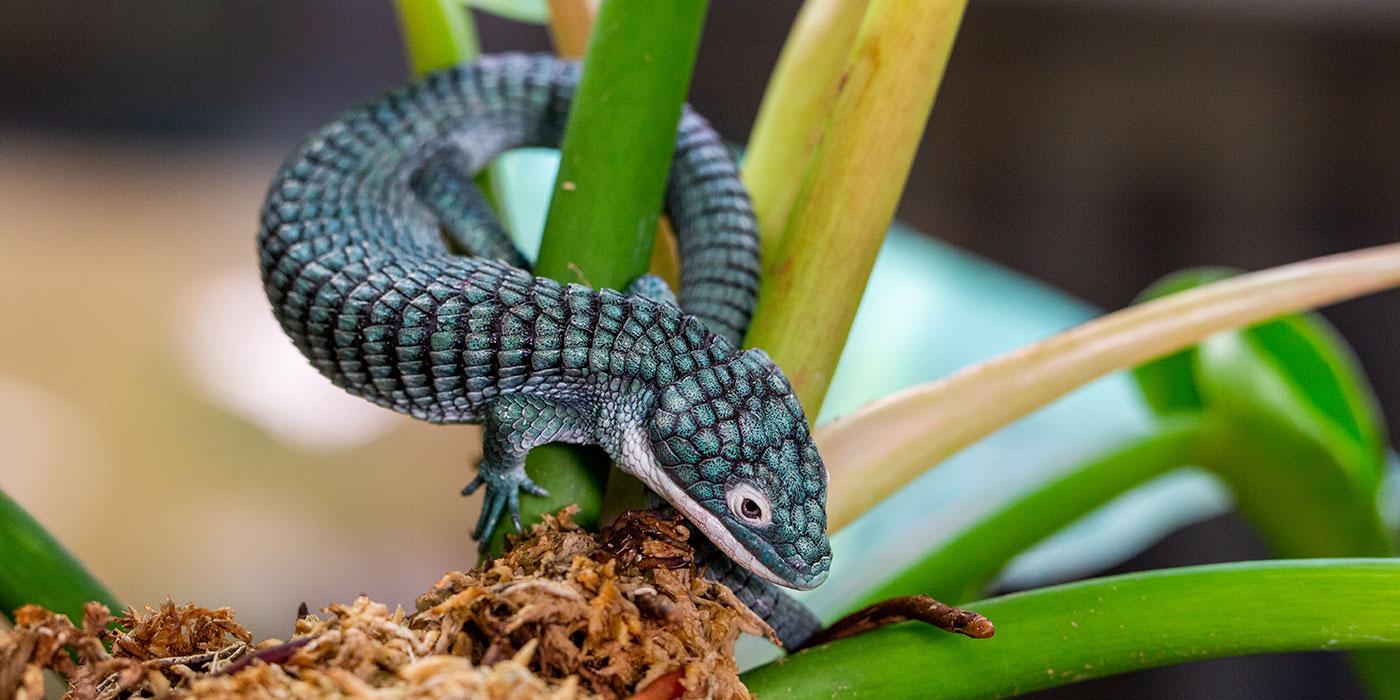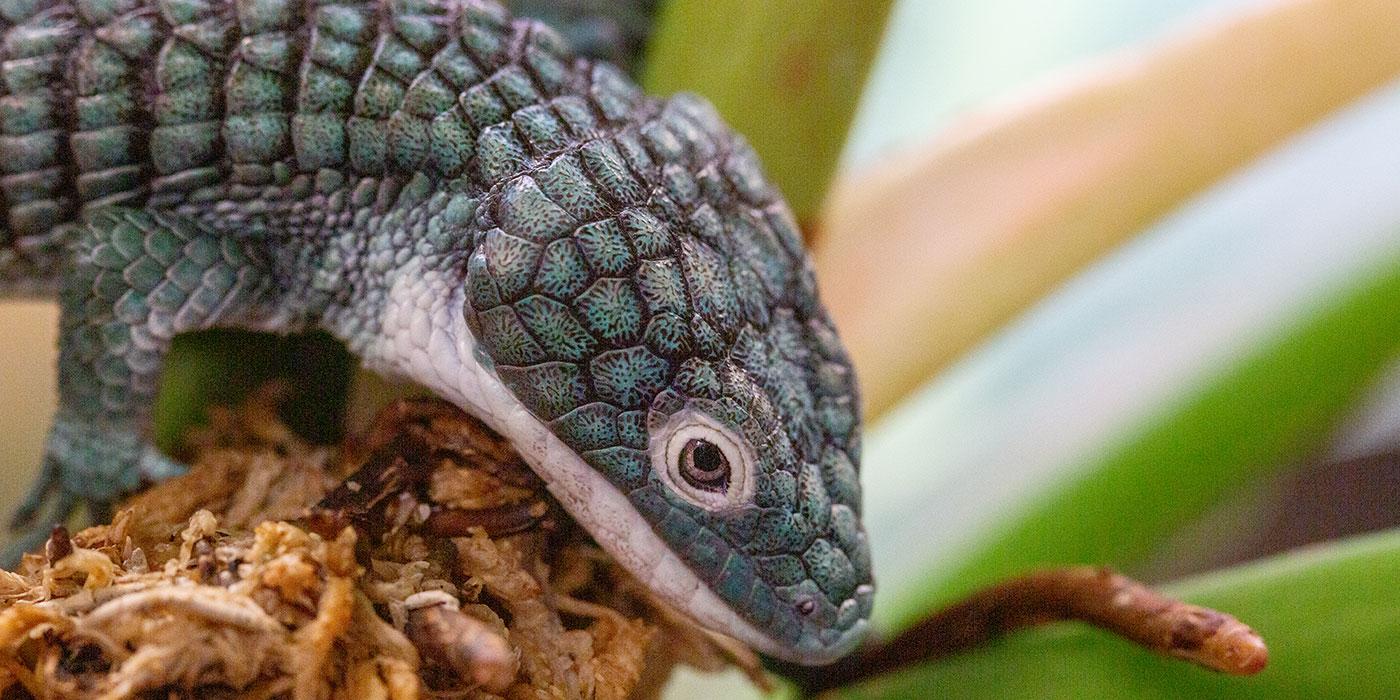Physical Description
Alligator lizards range from teal blue to deep green with pale yellow bellies and a yellow ring around each eye. Males tend to be more vibrant than females, while juveniles are paler and marked with dark, lateral stripes.
The alligator lizard has a triangular head and a prehensile tail that helps them climb and navigate through treetops.
Size
Native Habitat
These lizards are native to the Mexican states of Veracruz and Pueblo. They are arboreal, meaning they live in trees, and are most commonly found 130 feet (40 meters) above the forest floor.
Their preferred habitat is the humid canopy of cloud forests, among bromeliads and dense vegetation. Alligator lizards are typically found at elevations of 4,500-9,000 feet (1,350-2,740 meters).
Lifespan
Food/Eating Habits
Sleep Habits
Reproduction and Development
Alligator lizards are viviparous, meaning they give birth to live young. They can give birth to a single litter of seven to 12 offspring each year.
Breeding typically occurs in the fall and young are born between April and June, after six to eight months of gestation.
Conservation Efforts
The destruction of cloud forests poses the greatest threat to alligator lizards, and the growing demand for agriculture drives deforestation within their habitat. The pet trade is also considered a threat to this species.
These lizards can be found in two protected areas within their natural range and have been given special protection under Mexican law. Other species within the Abronia genus are also at risk as a result of habitat destruction due to their restricted range. Because of this, they are considered some of the planet's most threatened lizard species.
Help this Species
- Reduce, reuse and recycle — in that order! Cut back on single-use goods, and find creative ways to reuse products at the end of their life cycle. Choose recycling over trash when possible.
- Choose your pets wisely, and do your research before bringing an animal home. Exotic animals don’t always make great pets. Many require special care and live for a long time. Tropical reptiles and small mammals are often traded internationally and may be victims of the illegal pet trade. Never release animals that have been kept as pets into the wild.
- Share the story of this animal with others. Simply raising awareness about this species can contribute to its overall protection.
- Growing, transporting and preparing food uses a lot of resources, so choose local, seasonal produce when possible. A significant amount of food waste also ends up in landfills, so only buy what you can eat.
Animal News

Get to Know the Herd of Asian Elephants Living at the Zoo




